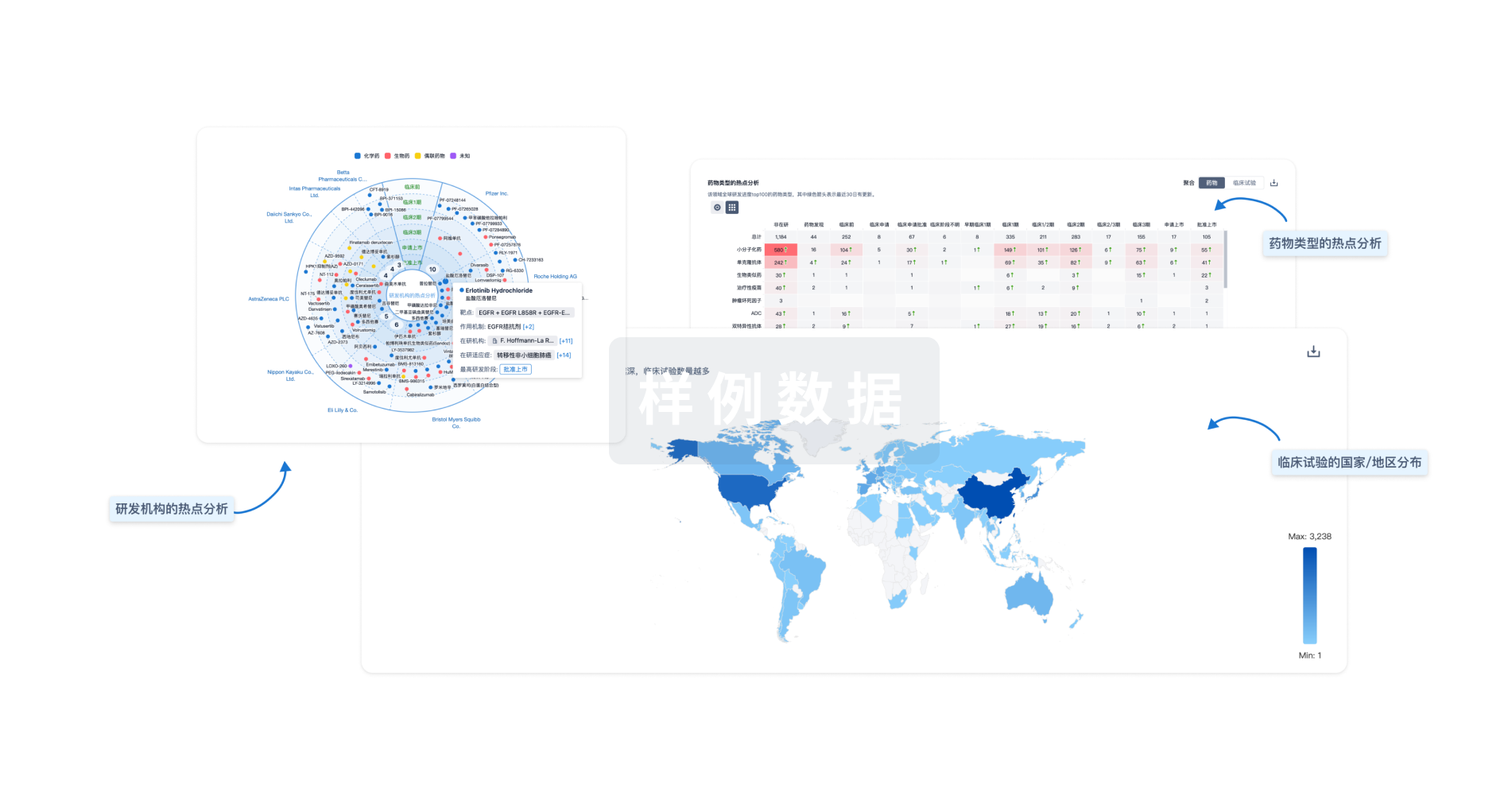预约演示
更新于:2025-05-07
Anaplasmosis
微粒孢子虫病
更新于:2025-05-07
基本信息
别名 ANAPLASMOSES、Anaplasma Infection、Anaplasma Infections + [32] |
简介 A disease usually in cattle caused by parasitization of the red blood cells by bacteria of the genus ANAPLASMA. |
关联
3
项与 微粒孢子虫病 相关的临床试验NCT03932448
Fever After Tick Bite (FATB) Study; Determining the Etiology of Tick-Borne Human Infections in Northern Europe
The proposed study is a collaboration between Microbiology, SU/Sahlgrenska and the Infectious Diseases clinic at SU/Östra as well as several Infectious Diseases clinics throughout Sweden aiming at improving microbiological diagnostic assays regarding the early identification of tick-borne microorganisms (including as of yet unidentified pathogens) capable of causing human disease using modern diagnostic tools.
At the initial study visit (day 0) plasma, serum, urine, saliva, and PBMCs (and tick, if available) will be collected from patients developing fever within two weeks after a tick bite. Additional follow-up samples will be obtained after 9 and 30 days as well as after 6 months. The initial samples will be analyzed using (a) directed multiplex PCR analysis for Tick-Borne Encephalitis (TBE), Borrelia, Anaplasma, Neoerlichia, Rickettsia, Coxiella, Tularemia, and Babesiosis in plasma, whole blood and urine, (b) conventional IgM and IgG serology for TBE, (c) "Next Generation Sequencing" (NGS) for the detection of bacterial 16s rRNA as well as unknown viruses, (d) potential biomarkers, and (e) host genetic factors. Among patients where initial sampling indicates the presence of a potential pathogen or in patients developing neurological symptoms, a lumbar puncture will be performed and CSF will be further analyzed. Samples will also be evaluated regarding potential microbiological factors predisposing for severity of infection.
The primary objective of the study is to improve diagnostic tools in the initial early phase of infections caused by tick-borne pathogens, especially TBE prior to the affliction of the central nervous system, and to attempt to identify which factors impact the course of infection as it is believed that approximately 75% of infected individuals resolve their infection in this first phase whereas others develop meningoencephalitis with significant subsequent neurological sequelae. Secondary objectives of the study include investigating for the presence of and treating other tick-borne pathogens, setting the stage for coming clinical trials evaluating novel anti-viral therapies for TBE.
At the initial study visit (day 0) plasma, serum, urine, saliva, and PBMCs (and tick, if available) will be collected from patients developing fever within two weeks after a tick bite. Additional follow-up samples will be obtained after 9 and 30 days as well as after 6 months. The initial samples will be analyzed using (a) directed multiplex PCR analysis for Tick-Borne Encephalitis (TBE), Borrelia, Anaplasma, Neoerlichia, Rickettsia, Coxiella, Tularemia, and Babesiosis in plasma, whole blood and urine, (b) conventional IgM and IgG serology for TBE, (c) "Next Generation Sequencing" (NGS) for the detection of bacterial 16s rRNA as well as unknown viruses, (d) potential biomarkers, and (e) host genetic factors. Among patients where initial sampling indicates the presence of a potential pathogen or in patients developing neurological symptoms, a lumbar puncture will be performed and CSF will be further analyzed. Samples will also be evaluated regarding potential microbiological factors predisposing for severity of infection.
The primary objective of the study is to improve diagnostic tools in the initial early phase of infections caused by tick-borne pathogens, especially TBE prior to the affliction of the central nervous system, and to attempt to identify which factors impact the course of infection as it is believed that approximately 75% of infected individuals resolve their infection in this first phase whereas others develop meningoencephalitis with significant subsequent neurological sequelae. Secondary objectives of the study include investigating for the presence of and treating other tick-borne pathogens, setting the stage for coming clinical trials evaluating novel anti-viral therapies for TBE.
开始日期2019-05-15 |
申办/合作机构 |
NL-OMON27838
Ticking on Pandora's Box: a prospective case-control study into ‘other’ tick-borne diseases
开始日期2018-04-16 |
申办/合作机构 |
NCT01013636
Epidemiology and Clinical Presentation of Human Anaplasmosis in Eastern France
Anaplasmosis is a tick-borne transmitted infection. Its clinical expression include fever, cytopenia and hepatitis.This infection was initially described in United States. In Europe, its epidemiology is not well known. Some isolated cases have been diagnosed in several country, were the tick Ixodes ricinus is known to transmitted another infection :the Lyme borreliosis.The purpose of our study is to look systematically for Anaplasmosis, in patient living in Eastern France, and presenting with compatible clinical symptoms using a new diagnosis tool : PCR in blood samples. So we will have new data about epidemiology in our country and the clinical symptoms that are associated with Anaplasmosis.
开始日期2009-11-01 |
100 项与 微粒孢子虫病 相关的临床结果
登录后查看更多信息
100 项与 微粒孢子虫病 相关的转化医学
登录后查看更多信息
0 项与 微粒孢子虫病 相关的专利(医药)
登录后查看更多信息
2,498
项与 微粒孢子虫病 相关的文献(医药)2025-06-01·Research in Veterinary Science
Tick fever agents in dairy cattle from a tropical region subjected to different breeding systems: Parasitological, clinical, serological aspects and genetic diversity of Anaplasma marginale
Article
作者: Cavalcante, Alliny Souza de Assis ; Ferreira, Lorena Lopes ; André, Marcos Rogério ; Machado, Rosangela Zacarias ; Ribeiro, Nathalia Braz ; Krawczak, Felipe da Silva ; Lopes, Welber Daniel Zanetti ; Bastos, Camila Valgas ; Sales, Kamila Gaudêncio da Silva ; Calchi, Ana Claudia ; Paula, Warley Vieira de Freitas ; Dantas-Torres, Filipe ; Soares, Vando Edésio
2025-06-01·MethodsX
Quantification of 3‑chloro-7‑hydroxy-4-methylcoumarin (CHMC) in urine as a biomarker of coumaphos exposure by high-performance liquid chromatography-fluorescence detection (HPLC-FLD)
Article
作者: Wugofski, Lee ; Robbins, Zachary G ; Striley, Cynthia A
2025-05-01·Ticks and Tick-borne Diseases
Role of tick infestation in the progression of Anaplasma phagocytophilum infection in lambs
Article
作者: Sprong, H ; Kerkhof, K ; Wijburg, S R ; Stuen, S ; Groenevelt, M
11
项与 微粒孢子虫病 相关的新闻(医药)2024-08-20
LINDEN, N.J., Aug. 20, 2024 /PRNewswire/ -- ACCU Reference Medical Laboratory, a leading provider of advanced diagnostic services, is proud to announce the implementation and availability of our new molecular PCR (Polymerase Chain Reaction) panels for the diagnosis of tick-borne diseases. This groundbreaking development promises to enhance the accuracy, speed, and comprehensiveness of diagnosing these diseases, ensuring better patient outcomes.
Innovative Tick-Borne Disease Diagnostic
Continue Reading
A new Molecular PCR Test for Tick-Borne Disease allows providers to quickly find the appropriate treatment.
Post this
Tick-borne diseases are a growing concern, nationwide, with cases on the rise, due to increasing tick populations and expanding geographic ranges. These diseases, including Lyme Disease, Anaplasmosis, Babesiosis, Ehrlichiosis, and Rickettsia Species can present with non-specific symptoms that complicate diagnosis. Early and accurate detection is crucial for effective treatment and prevention of severe complications.
The new molecular PCR panels introduced by ACCU Reference Medical Lab offer a highly sensitive and specific method for detecting various tick-borne pathogens. This cutting-edge technology allows for the simultaneous identification of multiple pathogens in a single test, providing a comprehensive diagnostic solution.
Key Benefits of the new PCR panels for diagnostic of tick-borne pathogens
Enhanced Sensitivity and Specificity: The molecular PCR panels are designed to detect even low levels of pathogen DNA, ensuring accurate diagnosis even in early stages of infection.
Rapid Turnaround Time: Results are available within hours, allowing for prompt clinical decision-making and initiation of appropriate treatment.
Comprehensive Detection: The panels cover a broad range of tick-borne pathogens, reducing the need for multiple tests and improving diagnostic efficiency.
Minimally Invasive: The tests require only a small blood sample, making the process easier and more comfortable for patients.
Expert Commentary
"We are thrilled to bring this advanced diagnostic tool to our healthcare providers and patients," said Dr. Julian Arce, Laboratory Director of ACCU Reference Medical Lab. "Our new molecular PCR panels represent a significant leap forward in the fight against tick-borne diseases. By providing faster and more accurate diagnoses, we aim to improve patient outcomes and contribute to public health efforts in managing these complex infections."
About ACCU Reference Medical Lab
ACCU Reference Medical Lab is a premier multi-specialty reference laboratory dedicated to providing comprehensive diagnostic services, nationwide. With a focus on accuracy, reliability, and innovation, the laboratory offers a wide range of tests to support healthcare providers in delivering optimal patient care.
For more information, please visit .
SOURCE Accu Reference Medical Lab
诊断试剂
2024-07-17
BATON ROUGE, La., July 17, 2024 /PRNewswire/ -- With the spread of anaplasmosis reaching unprecedented levels across the United States, University Products continues to be the leading provider of the world's only inactivated Bovine Anaplasmosis vaccine, offering a cost-effective, easy-to-administer, and sustainable solution for a cattle industry under siege. While traditional methods such as pest control and chlortetracycline (CTC) medicines provide some relief, they fall far short of the comprehensive protection needed to protect herds now and in the future.
Continue Reading
Anaplasma marginale
Bovine Anaplasmosis Vaccine
"Antibiotics were never meant to be a routine cure, but are an emergency response to breakthrough infections," said Gene Luther from University Products. "Antibiotic overuse can lead to major antibiotic resistance. They're also not cost effective. Vaccination is really the only route that makes sense, both biologically and economically."
Why Traditional Methods Are Insufficient to Combat Anaplasmosis
Anaplasmosis in cattle is primarily spread through bites from infected ticks and horseflies. The transmission process begins when these parasites feed on an infected animal and acquire the Anaplasma marginale bacteria. The bacteria complete part of their life cycle in each tick's gut before moving to the salivary glands and being transmitted to other animals through repeated bites. Similarly, horseflies can spread the disease for up to two hours after feeding on an infected host.
Eliminating these pests is nearly impossible, while battling them has become a never-ending, costly, and mostly futile effort for ranchers.
Once infected, the disease continues to spread through blood or contaminated equipment that is improperly cleaned and reused. Symptoms in infected animals appear 3-6 weeks post-infection, ranging from mild anemia, fever, depression, and isolation; while severe infected adults exhibit jaundice and other symptoms, potentially leading to death.
Early diagnosis is particularly challenging in young animals, which may only exhibit fever and increased breathing rates due to their faster red blood cell regeneration. This can easily lead to chronic carriers that often do not show signs unless they are immunocompromised, before going on to infect many others before symptoms become apparent.
And this is why most treatment regimens improperly focus on treating animals after they have been infected, rather than using vaccination.
University Products' Anaplasmosis Vaccine: A Superior Solution
University Products' anaplasmosis vaccine offers a straightforward and economical approach to disease mitigation for multiple reasons:
Cost-Effective: The vaccine is significantly less expensive than the cumulative costs of CTC feed and ongoing pest control efforts. Testing animals for anaplasmosis and subsequently culling or separating infected animals adds further financial strain to ranchers, making vaccination a more budget-friendly option.
Ease of Use: With just two doses in the first year, followed by an annual booster, the vaccine simplifies the mitigation process. Producers can eliminate the guesswork and labor associated with ensuring cattle consume adequate medicated feed.
Reliable Protection: Unlike CTC feed, which may not provide consistent protection, the vaccine offers great protection against the loss of animals due to anaplasmosis, reducing the risk of antibiotic resistance and ensuring healthier herds.
"Our vaccine has always been a game-changer – we've got 25 years of experience to prove it," said Gene Luther. "And a simple vaccination allows producers to focus on other critical aspects of their operations, without the constant worry of pest control and medicated feed."
A detailed description of the vaccine and its method of administration is publicly available for PDF download. For more information on vaccine availability for ranchers and veterinarians, please contact University Products directly.
About University Products LLC
Based in Louisiana, University Products specializes in approved (for experimental use) bovine vaccines. Their anaplasmosis vaccine minimizes clinical signs in at-risk animals, is safe during pregnancy, and requires two initial doses plus annual boosters. The company is also researching vaccines for bovine babesiosis and theileriosis. Veterinarians can inquire about availability by emailing directly at [email protected].
Media Contact:
Gene Luther, Director
1-225-334-0851
[email protected]
SOURCE University Products LLC
疫苗
2024-02-22
BATON ROUGE, La., Feb. 22, 2024 /PRNewswire/ -- With the annual vector season coming up, University Products recently underscored the critical importance of early vaccination against bovine anaplasmosis to reduce herd losses. Offering a sensible and budget-friendly solution for cattle farmers nationwide, the University Products Anaplasmosis Vaccine has been field-tested for over 20 years and provides superior protection against this devastating endemic disease.
Continue Reading
University Products LLC
University Products LLC
"Anaplasmosis remains a longstanding challenge for the cattle industry," said Gene Luther, Director of University Products. "It significantly impacts the health and productivity of herds every single year and it hits hard in the spring, summer and fall especially, when insects like ticks and biting flies begin to flourish, spreading disease. So you don't want to wait until your herd is already infected before you start thinking about preventive measures. Start now. Especially since the FDA has imposed stricter rules for antibiotic use."
University Products' vaccine stands out for its affordability, with per-dose costs nearly half that of diagnostic lab testing, and also for its effectiveness in reducing clinical symptoms associated with anaplasmosis.
Getting Ahead of Vector Season: Navigating Regulatory Changes
The importance of timely and effective disease management strategies is highlighted by recent draft guidance from the Food and Drug Administration concerning antimicrobial drugs given to food -producing animals. Those drugs, previously much easier to get, now require veterinarian approval and administration.
The National Cattlemen's Beef Association (NCBA) also weighed in on the potential challenges of implementing new FDA guidelines, which now also require duration labeling for products treating anaplasmosis. NCBA Chief Veterinarian Dr. Kathy Simmons warned that such labeling was problematic at best, stating: "Some of these diseases that are vector borne see variations in the vector season based on the climate that you're raising cattle. They may not be able to give a specific duration. They may have to publish a maximum duration and that won't be easy either."
Of this specific concern, Gene Luther from University Products said, "This just underscores the many challenges our industry faces when dealing with bovine disease. But fortunately, our vaccine is already a straightforward, reliable solution. Our vaccine can be used in any climate, during any season."
Some General Spring Calving Vector Recommendations:
Vaccinate herds for anaplasmosis, if not previously done.
Continue other vector measures for the herd like fly and tick control programs.
Check spraying equipment, dust bags, and oilers, and obtain needed chemicals or tags for fly and tick control.
Consider professional controlled-burns and/or chemical sprays to keep excessive weeds and brush in check. Always contact professionals for these mitigation measures.
The Bottom Line: Economic Benefits of Vaccines
"Our vaccine's affordability enables more small and mid-sized cattle farmers to protect their herds too," said Gene Luther. "While minimizing financial strain. That's who we try to reach first – who we try to help the most: farmers who do not have enormous corporate budgets to work with. These folks need help that is immediate and cost effective."
The University Products vaccine does not prevent infection, but when properly used, significantly reduces clinical signs in at-risk animals. The vaccine requires only two doses in the first year, with one annual booster each year thereafter, and is safe to use in any stage of bovine pregnancy.
A detailed description of the vaccine and its method of administration is publicly available for PDF download. For more information on vaccine availability for ranchers and veterinarians, please contact University Products directly.
About University Products LLC
Based in Louisiana, University Products specializes in USDA approved (for experimental use) bovine vaccines. Their anaplasmosis vaccine minimizes clinical signs in at-risk animals, is safe during pregnancy, and requires two initial doses plus annual boosters. The company is also researching vaccines for bovine babesiosis and theileriosis. Veterinarians can inquire about availability by emailing directly at [email protected].
Certain facts, quotes, and guidelines sourced from:
Oklahoma State University:
Media Contact:
Gene Luther, Director
1-225-334-0851
[email protected]
SOURCE University Products LLC
疫苗
分析
对领域进行一次全面的分析。
登录
或

Eureka LS:
全新生物医药AI Agent 覆盖科研全链路,让突破性发现快人一步
立即开始免费试用!
智慧芽新药情报库是智慧芽专为生命科学人士构建的基于AI的创新药情报平台,助您全方位提升您的研发与决策效率。
立即开始数据试用!
智慧芽新药库数据也通过智慧芽数据服务平台,以API或者数据包形式对外开放,助您更加充分利用智慧芽新药情报信息。
生物序列数据库
生物药研发创新
免费使用
化学结构数据库
小分子化药研发创新
免费使用


